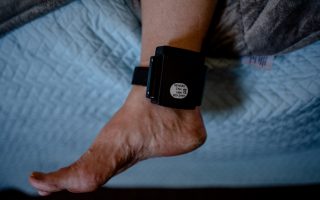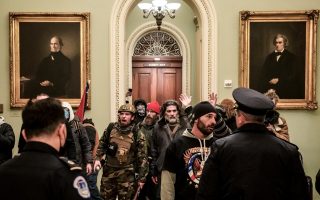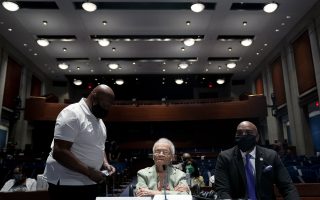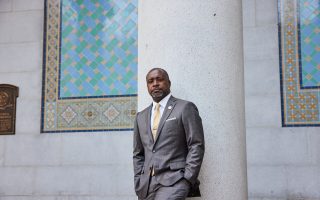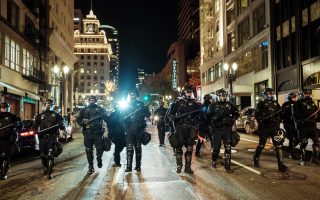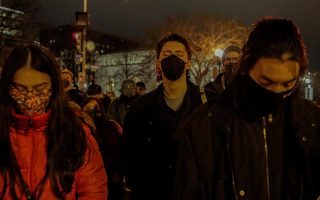How police justify killing drivers: ‘The car was a weapon’
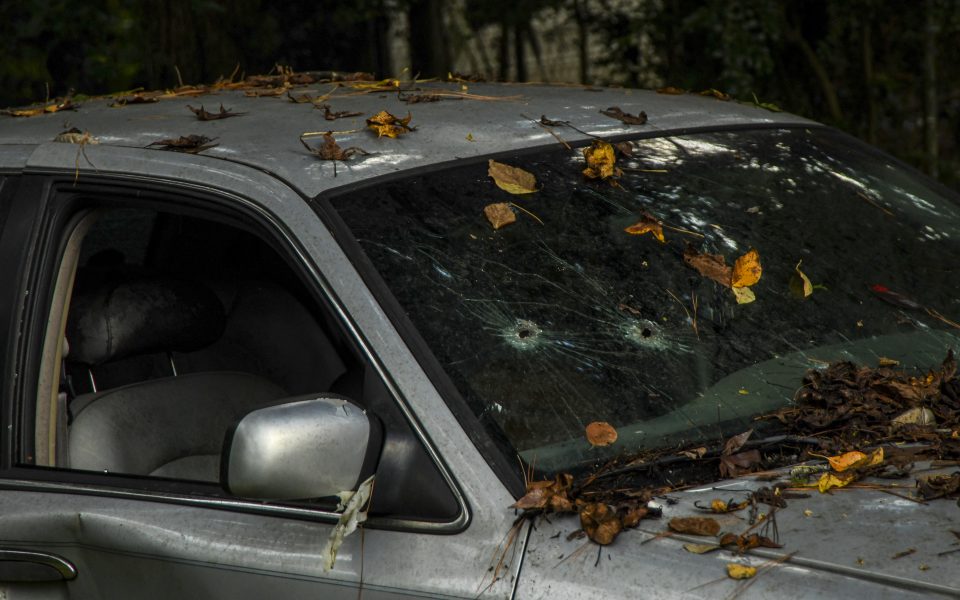
On a Sunday in May 2017, a patrol car sat outside the city’s oldest public housing project, waiting for anyone acting suspiciously. The two police officers heard Cedric Mifflin before they saw him, blasting music from a silver Mercury Grand Marquis. Then they tried to pull him over: He wasn’t wearing a seat belt.
Mifflin, a 27-year-old Black man, kept driving. What happened next is disputed, but how it ended is certain. Officer Michael Seavers, who is white, leapt out of the patrol car, drew his gun and fired 16 times at the moving car. He thought Mifflin intended to run him over, he said later.
The officer’s defense of killing Mifflin, who wielded neither a gun nor a knife, is one repeated over and over across the country: The vehicle was a weapon. In a New York Times investigation of car stops that left more than 400 similarly unarmed people dead over the past five years, those words were routinely used to explain why police officers had fired at drivers.
In about 250 of the cases, the Times found that police officers had fired into vehicles that they later claimed posed such a threat. Relative to the population, Black motorists were overrepresented among those killed.
The country’s largest cities, from New York to Los Angeles, have barred officers from shooting at moving vehicles. The U.S. Department of Justice has warned against the practice for decades, pressuring police departments to forbid it. The risk of injuring innocent people is considered too great; the idea of stopping a car with a bullet is viewed as wishful thinking.
“Bad idea. Bad to do,” said Carmen Best, the former Seattle police chief. “If you think the vehicle is coming toward you, get yourself out of the way.”
Moving vehicles can be deadly. Nine officers have been fatally run over, pinned or dragged by drivers in vehicles approached for minor or nonviolent offenses in the past five years.
But in many instances, local police officers, state troopers and sheriff’s deputies put themselves at risk by jumping in front of moving cars, then aiming their guns at the drivers as if in a Hollywood movie, according to body-camera footage. Or they reached into cars and became entangled with motorists, then opened fire.
Often, the drivers were trying to get away from officers, edging around them, not toward them, the footage shows, and the officers weren’t in the path of the vehicle when they fired.
“You see many where bullets are in the back of the car, in the side of the car,” said Geoffrey Alpert, a criminologist at the University of South Carolina who has researched high-risk police activities for more than 30 years. “In the high 90 percentile of cases I’ve seen, the person’s just trying to get away.”
Some officers who fatally shot motorists didn’t appear to be in any jeopardy at all, the Times review showed. In some cases the vehicle was stationary, even incapable of moving. Yet prosecutors found that the claim that officers feared for their lives or the lives of others was enough to justify all but the rarest of shootings.
Seavers faced no charges in the Mifflin case. Phenix City and state officials have declined to release police body- and dashboard-camera videos of the fatal encounter.
Jeremy Bauer, a forensics expert in Seattle who has testified for police departments nationwide and for families of people killed, reviewed the state investigative report, witness testimony, photographs and other materials and concluded that the officer had not been in peril. It would have been impossible, he said, for Mifflin to have been headed for Seavers when the shots were fired.
Phenix City is typical of many communities where fatal police encounters with motorists have occurred over the past five years. It’s in the South. It has fewer than 50 patrol officers. And with fewer than 39,000 residents, it’s relatively small. The police department has lower training and qualification requirements than those of big cities.
“They’re not Navy SEALs,” said Kenneth Davis, the district attorney in Russell County, home to Phenix City. “These guys are average guys.”
The chief, Ray Smith, joined the department 32 years ago and has led it for the past 12. Its use-of-force policy — governing how officers are permitted to subdue people — has not been revised to include reforms that many other departments have adopted. Smith didn’t respond to multiple requests for an interview. Neither the police department nor the city’s lawyer responded to detailed questions about the Times’ findings.
Law enforcement killed two unarmed Black men here in 2013, but there was no citywide protest, no Ferguson fallout, no George Floyd moment.
Phenix City’s use-of-force policy prohibits firing from inside a moving vehicle, but it doesn’t say anything about shooting at moving vehicles.
That is unusual: Out of nearly 200 departments that had such shootings and provided their policies to the Times, just 13 did not address the issue.
Critics of the practice argue that shooting at a driver is ineffective or even disastrous. “It’s like you’ve created an unguided missile,” said Chuck Wexler, the executive director of the Police Executive Research Forum, a law enforcement policy nonprofit.
To identify cases where police fired into vehicles, the Times reviewed data collected by The Washington Post and the research groups Mapping Police Violence and Fatal Encounters. Reporters then filed hundreds of public-records requests, analyzed more than 115 video and audio recordings, examined investigative records and interviewed dozens of experts and motorists’ families. In addition to the 250 otherwise unarmed drivers, scores of such shootings involved motorists who held weapons or were being pursued for violent crimes.
No one disputes that cars can be deadly: Scores of officers have been killed working accident scenes or writing tickets. But no officer in any big city that has banned the practice has been fatally run over by a vehicle he or she stopped.
A Stop, a Chase and 16 Bullets
Mifflin sported a tattoo of praying hands on his left forearm; his right was inked with the name of his daughter, Shay. Only 5-foot-4 and 130 pounds, Mifflin acted street-wise, posing like a tough guy in photos. But that was a front; he never got into fights, and friends often mocked him for how he spent his Sunday mornings.
“He was the one who stayed in church with his grandma,” said Dontrell Grier, Mifflin’s stepbrother.
Mifflin lived in Columbus with his grandparents, a social worker and a retired small-town Georgia police chief who instructed him to always follow police orders.
He worked stocking shelves at Walmart and Piggly Wiggly. He loved cars, but he allowed more than eight years of traffic tickets to spiral into a crisis, including a suspended driver’s license.
On that fateful Sunday in May 2017, he drove from Columbus to Phenix City to pick up a friend.
The officers’ decision to pull him over appeared to be a “pretextual” stop, when the police stop drivers — often people of color — for an infraction and then look for a more serious offense, two policing experts said.
Why did Mifflin drive off? Maybe because of the suspended license. Maybe because of a story his stepbrother liked to tell: Grier had been a passenger in a car pulled over after the driver initially didn’t obey commands to stop. The Phenix City officers had aimed their weapons at him and dragged him out of the vehicle.
Whatever the reason, instead of complying, Mifflin sped across a busy road. The police chased him. At that point, he was just four minutes from the Georgia line. He only needed to make it to the corner near Ed’s barbecue restaurant, take a couple of turns and cross a bridge.
But an SUV blocked his path: Djaron Green, a manager for a financial company, was about to turn into the restaurant for lunch.
So Mifflin whipped his car into Ed’s parking lot, stalling out, Green recalled. Sirens blaring, the cruiser came to a stop.
Seavers jumped out of the passenger side of the patrol car. Gun drawn, he confronted Mifflin.
Green, the closest witness, said the car never came near Seavers. Instead, he said, it appeared to move around him. And Bauer, who created a video reconstruction for the Times, concluded that Seavers was never in harm’s way.
The officer initially fired twice; both shots entered the passenger side of the front window at a sharp angle, indicating that the car was moving past the officers, Bauer said. Both hit Mifflin. Either would have been fatal.
The vehicle kept traveling forward; Seavers turned his body and his gun to follow. Four bullets entered the passenger’s side of the car. As it passed, the patrol officer emptied his magazine.
“His life was not in danger if the vehicle was leaving,” said Isaac Lawrence, Mifflin’s grandfather. He wanted to ask the officer, “So why did you shoot him?”
Mifflin’s sedan drifted across a road and finally stopped. At first, the two officers thought Mifflin had fled on foot. Instead, he was slumped over, dying from seven bullet wounds.
Creating Their Own Jeopardy
In November 2020, Deputy Jafet Santiago-Miranda of the Brevard County Sheriff’s Office searched for a stolen car in Cocoa, Florida. He spotted a similar vehicle, which pulled into a driveway, then backed out. The deputy left his cruiser and stepped in front of the car, then fired 10 times as it moved slowly forward, the dashcam video shows.
The driver, A.J. Crooms, 16, and a passenger, Sincere Pierce, 18, who had been planning to hang out with a friend, were dead. Officials later said that the vehicle was not the stolen car.
In dozens of fatal cases over the past five years, officers reacted similarly, jumping in front of vehicles or failing to move out of the way.
Such decisions are dangerous for both motorists and officers. Over the past five years, three officers who leaned inside vehicles during stops were killed when the drivers took off. Six others were run over by vehicles they were facing down.
Many big cities that ban shooting into moving vehicles also say officers should not step in front of cars. But of the departments that responded to the Times, more than two-thirds — mostly outside big cities — had no such policy.
Shootings sometimes had unintended consequences. In the cases reviewed by the Times, law enforcement officers did not just hit drivers: They killed eight passengers and injured at least 17 more.
A Pair of Settlements
The day after Cedric Mifflin was killed, Phenix City’s police chief said the encounter was traumatic not only for the man’s family “but for the entire police department.” He described the death not as a killing but as a “situation.”
“We’re going to try to find out everything that we can about how to avoid it in the future,” Smith pledged at a news conference.
But as of August, Phenix City had not changed its use-of-force policy to even mention shooting at moving vehicles. Seavers was still a patrol officer.
State investigators waited two days to question Seavers and did not record their interview with him, records show. Michael Gennaco, a former federal prosecutor who works with police departments to improve accountability, described the state’s inquiry as “inconsistent with basic investigative protocols.”
Davis, the county’s district attorney, brought the case before a grand jury. The grand jury opted not to charge Seavers.
After the decision, Davis suggested to Mifflin’s mother, Pochya Sanders, that she get a lawyer. She hunted for someone willing to sue Phenix City, she said, but most lawyers told her that Alabama juries side with the police.
Two months after the lawyer she eventually found filed a wrongful-death suit, the city offered Sanders $100,000 to settle. Her lawyer advised her to take it, even though neither of them had seen the video footage. So she agreed.
The city then offered to show her the videos, but she decided that she couldn’t watch her son die. Now, Sanders said, she wants them to be made public. “I just need the truth,” she said.
Seavers also sued the city — a workers’ compensation claim over an “accident occurring on the job” the day of Mifflin’s death. The officer said he suffered hearing loss that day, in all likelihood because of gunfire. The city settled for $5,500.
No police or city official reached out to Mifflin’s family after he was killed, his mother said. She was the one to identify her son’s bullet-ridden body. “I carried him for nine months. I’m the first person he ever talked to, the first person he ever smelled,” she said.
[This article originally appeared in The New York Times.]

